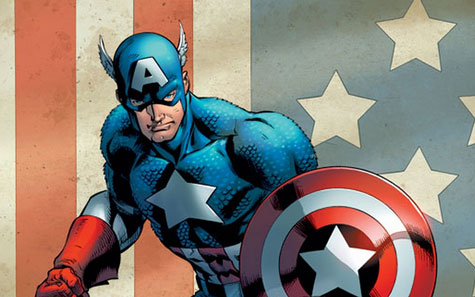
I don't remember how young I was when I discovered reruns of the 1966 Marvel animation show on a local syndication network, but it had to be the very early '80s. What I remember most was Captain America's cheesy and incredibly catchy theme, which featured the lyrical refrain:
“When Captain America throws his mighty shield.”
That was my very first encounter with Marvel's Sentinel of Liberty, and it may be one of the reasons why I started collecting comics in 1984—I was drawn to Captain America. His nobility and ability to inspire instantly hooked me as a fan. Now, some 32 years later, Cap remains my favorite comic book superhero and he's become a worldwide icon. It's both a little surreal and really cool that the Star Spangled Avenger has become a part of the public zeitgeist—and this year, his role in pop culture will only grow larger.
That's because 2016 is the 75th anniversary of Cap's creation, and come May, Marvel Studios will release the third Cap film, Captain America: Civil War. The film will split most of the cinematic incarnations of the Marvel heroes into two warring factions; one lead by Chris Evans's Cap and one lead by Robert Downey Jr.'s Iron Man.
So, as a Cap fan, I have a lot to look forward to—but I never expected ABC to air a one-hour documentary style special on my favorite character! That special, Marvel's Captain America: 75 Heroic Years, did a pretty great job breaking down the history and appeal of the character, as well as, several signature story lines in about 45-48 minutes (if you count commercials). However, there's still some stuff they left out or could have expanded upon more.
So, in this piece we'll take a look at some of the interesting moments of the special, cover some of the important moments they missed or could have fleshed out more, and offer up some reading suggestions for those looking to experience or revisit some classic moments in Cap history.
 One of the things I thought the special did really well was acknowledging the talents of Captain America creators Joe Simon and Jack Kirby. It was interesting to see the experiences that Simon and Kirby underwent as children of Jewish immigrants growing up in New York City during the era of the Great Depression, and how those events influenced their creation of the character. It was also great that the makers of the special took the time to talk to the surviving members of the Simon and Kirby families and get their thoughts on the history of both Cap and his fascinating creators.
One of the things I thought the special did really well was acknowledging the talents of Captain America creators Joe Simon and Jack Kirby. It was interesting to see the experiences that Simon and Kirby underwent as children of Jewish immigrants growing up in New York City during the era of the Great Depression, and how those events influenced their creation of the character. It was also great that the makers of the special took the time to talk to the surviving members of the Simon and Kirby families and get their thoughts on the history of both Cap and his fascinating creators.
The special also expertly captured the historical significance of Captain America Comics #1—Cap's first appearance. I didn't realize how much work went into getting that issue out on time, or that it sold 1 million copies! That's unheard of with today's comics!
The special also talked about how, in the comics, Bucky was Captain America's teen sidekick during World War II—which, of course, was a product of the times when publishers believed that children needed a young character to identify with in order to enjoy a story. What was not mentioned, however, is that writer Ed Brubaker, who later resurrected Bucky as the Winter Soldier, added some fascinating and chilling wrinkles to the character's WWII history. In the early issues of his acclaimed run on Cap, Brubaker established that Bucky was in fact a highly trained adolescent soldier and assassin. He was partnered with Cap to do things Steve Rogers couldn't do as a symbol—like assassinate Nazi leaders.
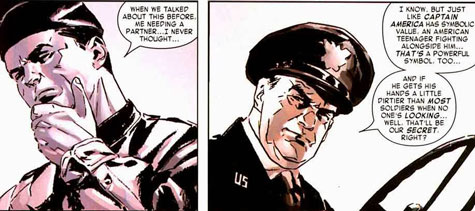
It was a revelation that added much to the character's mystique, and part of what made the character's return as the Winter Soldier so cool. If you want to learn more about that aspect of Bucky's past, checkout the graphic novel Captain America, Vol 1: Winter Soldier Ultimate Collection, and get in on the ground floor of one of the best Captain America runs of all time by reading the comics that inspired the Winter Soldier feature film. It collects the debut issues of Brubaker's run and features some extraordinary art by Steve Epting and Michael Lark.
The special also mentioned how the Captain America comics sort of struggled to find a sense of purpose after the end of World War II, so they sort of reimagined the character as “Captain America: Commie Smasher.” Although it wasn't successful, it did set up a very interesting idea that would be revisited several times over in Captain America's history.
That idea, which was introduced by Steve Englehart—a writer who appears in the special to talk about his idea to have Richard Nixon be the head of the Secret Empire—was a way to sort of reconcile the new history that Stan Lee gave Captain America when he was reintroduced in the '60s with the Commie Smasher Cap stories of the '50s.
It explained that the rabid, anti-communist Cap of that time period was William Burnside, a man who idolized the original Captain America so much he came up with a way to become him. Unfortunately, the process he used to physically transform himself was flawed, and it drove him and Jack Monroe, who served as his Bucky, insane.
Burnside and Monroe's mental instability lead to them being frozen in suspended animation. They were later thawed out and revived to fight Steve Rogers and The Falcon in a great storyline by Englehart and artist Sal Buscema that ran through 1972's “Captain America” #153-156. Unfortunately, it's not collected in any graphic novel currently in print, but it's definitely worth reading. It's exciting and powerful seeing the idealistic Cap of World War II clash with the twisted ideology of the early Cold War Sentinel of Liberty.
The special does talk quite a bit about Cap's standout adventures in the 1970s, like his battle with the Secret Empire, becoming Nomad, and Jack Kirby's Madbomb story. Unfortunately, very little is said about Captain America's adventures in the 1980s, which is where I first discovered the character. I read my first Cap story in 1985; the same year a writer named Mark Gruenwald began his decade-long run on the Captain America comic series.
The Gruenwald era of Cap was characterized by strangeness, adventure, and quite a bit of humor and satire. Those latter elements allowed the writer and his artistic collaborators to tell some powerful and hard hitting stories. Perhaps his two most famous are the sagas of the Captain, and the Scourge of the Underworld.
In 1987's Captain America #332, Gruenwald and artist Tom Morgan kicked off a storyline that began with the U.S. government ordering Steve Rogers to become its agent. He decided to resign instead, and adopted a new super heroic identity, the Captain.
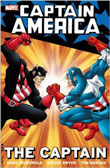 The government chose an angry and violent man named John Walker to replace Rogers. For the next two years, Gruenwald and his collaborators chronicled Rogers’s adventures as the Captain and Walker's struggles with being Cap. It was an epic story line with a lot of very cool twists and turns that came to a close in 1989's Captain America #350, which pitted Walker and Rogers against each other and saw the return of a classic Cap foe. The entire storyline was collected a few years back in a graphic novel called Captain America: The Captain.
The government chose an angry and violent man named John Walker to replace Rogers. For the next two years, Gruenwald and his collaborators chronicled Rogers’s adventures as the Captain and Walker's struggles with being Cap. It was an epic story line with a lot of very cool twists and turns that came to a close in 1989's Captain America #350, which pitted Walker and Rogers against each other and saw the return of a classic Cap foe. The entire storyline was collected a few years back in a graphic novel called Captain America: The Captain.
The Scourge of the Underworld storyline was just starting when I was reading comics, and it appeared in a whole bunch of Marvel titles in the '80s. Essentially, you would be reading a book where the heroes were battling a B-List villain, and then, all of a sudden, a mysterious gunman would reveal himself from the shadows or a crowd and execute them! It was crazy, unexpected stuff.
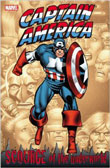 Cap confronted the Scourge in a story that ran through 1986's Captain America #318-320. Gruenwald later revisited the Scourge storyline three years later in a series of backup tales that ran through Captain America #358-362 and pitted former Cap, John Walker (now known as the US Agent), against the mysterious vigilante. All of those issues are collected in a graphic novel titled Captain America: Scourge of the Underworld.
Cap confronted the Scourge in a story that ran through 1986's Captain America #318-320. Gruenwald later revisited the Scourge storyline three years later in a series of backup tales that ran through Captain America #358-362 and pitted former Cap, John Walker (now known as the US Agent), against the mysterious vigilante. All of those issues are collected in a graphic novel titled Captain America: Scourge of the Underworld.
Gruenwald's main stories in Captain America #358-362 were also pretty exciting and fun. They're featured in a collected edition called Captain America: The Bloodstone Hunt, which is essentially a mash up of Cap and Indiana Jones. It's a fun tale that has Steve Rogers racing around the globe to keep the pieces of a powerful and ancient relic out of the hands of several of his foes. Fans of the Captain America: The Winter Soldier feature film and those anticipating the upcoming Civil War film might be interested to know that the The Bloodstone Hunt is where Brock Rumlow, AKA the villainous Crossbones, made his comic debut.
So, Mark Gruenwald sort of ignited my lifelong love of Captain America, which continues to this day, even as Steve Rogers is not Cap. As the special showed, The Falcon was Steve Rogers’s handpicked successor for the mantle of Captain America when he lost the Super Soldier Serum that kept him young. He currently stars in the ongoing series Captain America: Sam Wilson. The special also broke the news that this summer, Steve Rogers will regain his youth and will once again become the Sentinel of Liberty in a new series titled, Captain America: Steve Rogers.
However, the special didn't elaborate on the best thing about this news: the fact that Steve's return doesn't mean Sam's time as Captain America will come to an end; rather, Captain America fans will have two different books featuring two different Sentinels of Liberty to indulge in this summer.
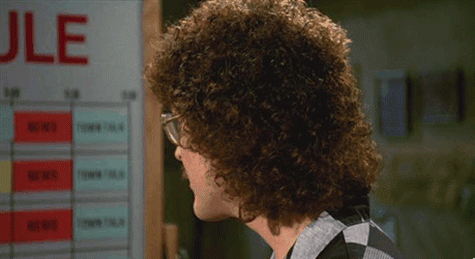
Steve's return spins out of Avengers: Standoff—a big March crossover event storyline that brings together all of the characters in the Avengers and S.H.I.E.L.D. family of titles. That month will also see the publication of Captain America: Sam Wilson #7, a massive issue that officially celebrates Cap's 75th Anniversary with a number of stories. So, if you're a fan of the Cap and Avengers movies and you're looking to try some of the current comics for the first time, that issue and the Standoff crossover might be a good place to start.
As ABC's Marvel's Captain America: 75 Heroic Years and hopefully this article showed, the past, present, and future are incredibly bright for Joe Simon and Jack Kirby's creation. So, while you're anxiously awaiting Steve Rogers’s next big screen outing in Civil War, celebrate his 75th anniversary in style by checking out some of the fun, powerful, exciting, and relevant comic stories mentioned here and in the special.
